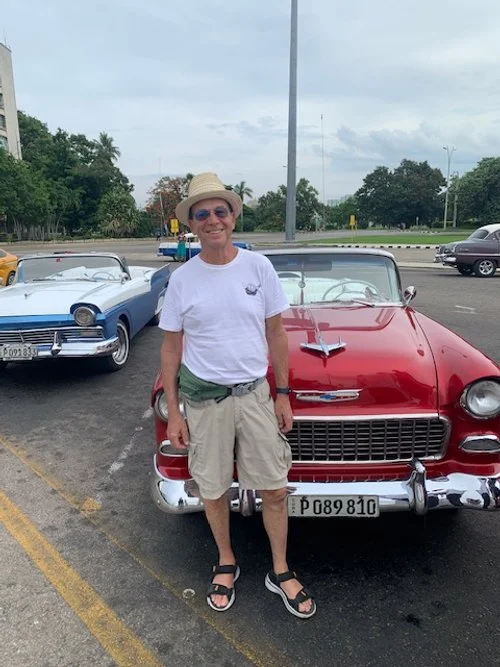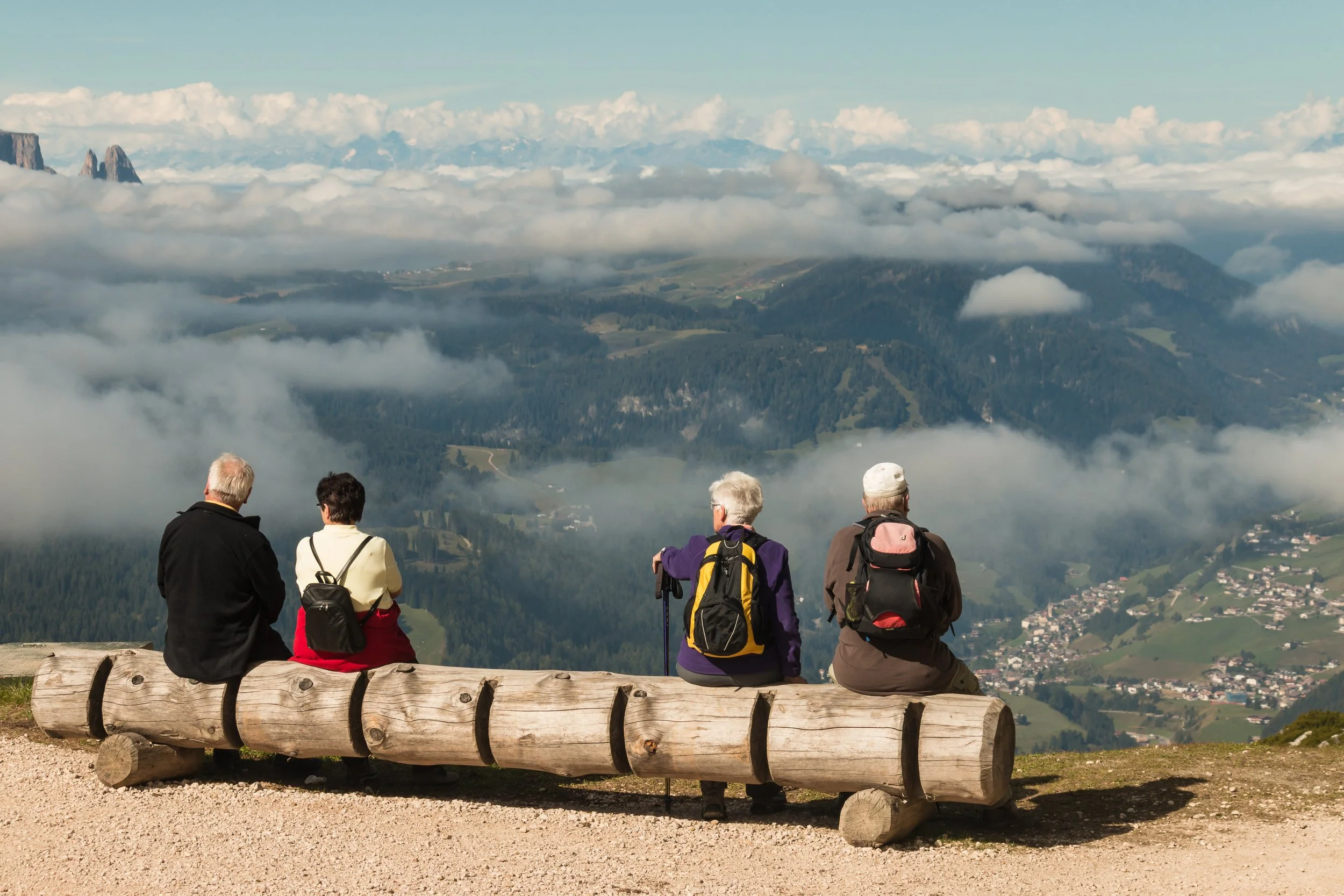22 June 2023
Vedado, Havana Cuba
The story picks up on day 5 of our ACC Percussion trip to Cuba. We are a group of 13. Ten students, a professor, a tour company leader and a local guide.
We come from many backgrounds; from young students working on degrees, to working adults and even one retired businessman now taking time to study music: yours truly.
I’ve traveled before as a businessman and tourist, some of my classmates have not. There are some things you can count on; airport aggravation, dicey digital connections, different customs sometimes difficult to understand, language barriers and almost always lovely local people who welcome you…along with a few looking for tips.
This trip is unique for me in a few ways. First, we are being hosted by local families in their homes. I was a bit unsure of this before the trip. It has been a wonderful, positive surprise. We have air-conditioned rooms, home-cooked meals and hosts who really enjoy visiting with us. Even if our Spanish is weak. The Vedado neighborhood is very walkable with many bars, restaurants, clubs and small one-room shops. It’s safe at night. Oh yea, it even has the North Korea embassy. The guard told me to stop taking pictures, but didn’t make me erase them. Lol.
But let’s get to the real differentiator. (College word for you). The tour is being run by Abroadia, a small company specializing in student trips to Cuba and Latin America. Tom Millington is the owner, and he is here on the trip with us. He talks about us having “experiences” and frankly that sounds a bit lame. Being American, we are jaded. Things are overhyped and over promised, and you can guess the rest. This is anything but. Enough with the backstory already! Let me break it down.
Wednesday 21 June.
Breakfast of farm fresh mango and avocado. Grilled cheese with real cheese-quite special in Cuba, omelet with fresh veggies, mango smoothies and Cuban coffee.
Visit to meet Roberto Chile, famous photographer in his home and studio. Roberto started our workshop with an exhibit of work given to him by famous artists, including THE Ernesto Che Guevara photo. From there, Roberto showed us his work including an exhibit of working people in Guanabacoa. All in black and white. Truly amazing. The collection includes Sanatrita subjects from Guanabacoa which has an important shrine. Roberto’s medium-black-and-white printed photography- has been impacted by the digital age. No more film, no darkrooms, and no mystery of the results since you see the preview on the digital camera.
Our world today is different. Cameras are ubiquitous. Photos are easily edited to show the ideal world, not the real one. Roberto broke it down for us and gave us a master class in artistic planning and design. Then his wife served us coffee on the patio while we sat on metal sculpture chairs. Those who wanted to were also offered a shot of rum. It was tasty. So was the coffee. Not your typical tour. But Tom and his local man Mario were just getting warmed up.
Next was an amazing lunch near the old fort. But the real experience was the trip to Guanabacoa. It was about 30 minutes out from Havana and another world. It was a small and very humble city. Old and not helped by the restoration efforts we’ve seen in Havana. I could see that the people didn’t have much. Roberto brought us to the Regla shrine, which was an 8-foot-tall x 6-foot-wide glass case holding a small statue of the saint with a small opening to put in gifts. Roberto’s friends from the neighborhood came and spoke to us about the history and practices followed by a song by a church member with an amazing voice. No backing. People kept coming up to see Roberto, it was clear he was respected and loved in the hood. The local leader said a few words to send it home.
OK like I said, I’ve traveled before. Where are you going to “experience” that? Meet the artist, hear how he developed and executed the work, visit the site and meet the people? It’s completely unique, and it totally delivers on the promise of experience.
But wait, there’s more. Back at the host house our host Perfecto gave us the detailed Che revolution story. I’ve seen the movie- Motorcycle Diaries, with young Che. (Check it out, I bet it’s not what you’re expecting.) I didn’t know that there’s a second diary about his work in Bolivia OR a third book about his experiences in Slovakia under Soviet rule. Which didn’t go well. We don’t often get this kind of insight at home. But this is the icing on the cake. Our host in a socialist country gave one of our US students a short lesson in cryptocurrency speculation. Now, as the retired businessman, I felt like I had to repeat the warning- speculation is very risky and sometimes even the best players lose. But what a way to breakdown culture stereotypes.
I want to say one more thing about the work Tom is doing.
American travelers don’t have the best reputation abroad. Some of us lack understanding of other cultures and in the extreme, expect things to be the same as home. Worse, they are disappointed and complain about cultural differences. Abroadia’s experiences are with real local people. The best in their field. Giving us the true story live and unedited. Which turns out to be completely different from stereotypical things we experience at home.
I summarize the work in two words. Tom is fighting ignorance. Tune in for more. Peace.
Thursday, 22 June
Last night I had a chance to experience the late-night scene here in Vedado. We were having a blast visiting our host family and got a late start. Many of the places in the neighborhood were closed. The much-recommended King Bar was still open so we stopped in there. It was quite nice, with great security and quite cool in spirit and temperature. Air conditioning is a luxury here and we are learning not to take it for granted. The crowd included beautiful people. We presumed it was LGBT or at least LGBT friendly. The staff were very friendly and we had an excellent time. It was a different experience for me as I never stay out late anymore. I think it impressed my fellow students. Kudos to the planners for housing us in a neighborhood safe enough to walk home in late at night.
The next morning, early, we went back to class. This time to the Havana music high school. Magnet school in the US. Our teacher was Jose Amat. Here was the lesson. Traditional Cuban percussion used multiple instruments played by multiple musicians. Drum set or drum kit came later. It became very popular and widely used. But, as the teacher described, it was not a great fit. The other dynamic, common in many types of music, is that there is always pressure to use a smaller band, especially in clubs. So having 4-6 hand drummers adds a big staff. One drum set needs to cover all the parts. The Maestro had a solution. One drummer plays multiple parts on the drum kit. And he gave us an extensive lesson on how. It is complicated, where’s the mystery right? To be able to do it will require significant practice (my housemate started as soon as we got home!). Maestro had well documented and translated books for sale (also available on Amazon), and of course he dedicated and signed them for us. It will help me a lot, since I need to bring it home to share with my drummer, ok, who is also my wife.
If you are with me so far, wait until you hear this.
Rap music is recognized and supported by the government as an official art form. For our Cuban music study, the Abroadia folks brought us to the Agencia Cubana De Rap, rap headquarters. In downtown Havana, the outside looks like any government agency. Inside it’s a Rap club. Big stage, full sound system, tasteful graffiti decorations and even a Mac to play the beats. Now our professor Mike and I had a debate running. Backstory: we’ve been steeped in Clave since we got here. And ,oh by the way , taken a bit of “redirection” let’s call it, if we don’t play it right . Clave is everywhere here, but Americans are at a disadvantage. We’ve been conditioned with the rock and roll beat. In the US, it is everywhere. (History lesson, it was not always like that in the US. In the early 60s some parents thought it would corrupt their teenagers. And here we are).
Back to the debate…
Position Professor Mike: Cuban rap developed from American rap which does not use the Clave, so no Clave.
Position Jeff: Cuban rap developed in the neighborhoods, hood for short, and would have to use the Clave.
Position Josh: hybrid, it is used sometimes.
The Agencia leader gave a short history, then brought on the rappers. Four acts. We started listening. At first the Clave was subtle, we thought we could hear it, but sometimes it was masked by other sounds. But after a few minutes, and with our new training, it soon became quite evident. It was everywhere. Back to this in a minute. We cleared the chairs for dancing, and the host brought out the rappers. In one set our own Brit joined the group and spit her rhymes in one of the songs. It was an amazing show so I will wrap it with one last story. Rapper Leope Seko had an awesome act, she sang and danced and she was beautiful. She came out into the audience to dance with us and teach us the steps. Then she clapped the 2/3 Clave and motioned for us to clap it back. And we did. In time. I think maybe she wasn’t expecting that. Lol.
Tourist time. We hear all the time in the US about the classic cars in Cuba. If you’re any kind of a motor head, you can’t miss the ride in a 1950s convertible. Built with real US steel, burning leaded gas. Mario our guide arranged it for us, in a 1955 Chevrolet (older than me. Lol.) The car was all original, with a few replacement parts needed for repairs. FYI a similar car in the US would be worth serious money. At first only the old guys wanted to go but at the last minute our two youngest students hopped in and brought the fee down to $10. We went out to Revolution Square, for photos and then through the park to see the river. Maybe a little bit touristy but a wonderful experience. I used to have a collectible car in the US. It would be difficult to book a trip like this. And impossible to do it for $10. For those on the fence, don’t let this one pass you by. I can almost guarantee that when you get home someone will ask you if you went on a classic car ride.
After a break, and another home cooked meal, we headed out to the Fox and Crow. Named for an Aesop fable. This is an underground jazz club. Small and intimate, less than 100 seats. We were scheduled to see Belinda Guerra & B’Jazz, a band fronted by a woman flautist. Five pieces; flute, keys, bass, drum and sax. The band played mostly originals, with a few standards. I did not do well at standard identification. The flute player tore it up and the flute is a pretty uncommon instrument in jazz. The audience was small, which seemed kind of sad. Once again, great show, small crowd in intimate setting and very reasonable prices. One more great pick from Tom!
Until next time, live from Havana, Jeff














